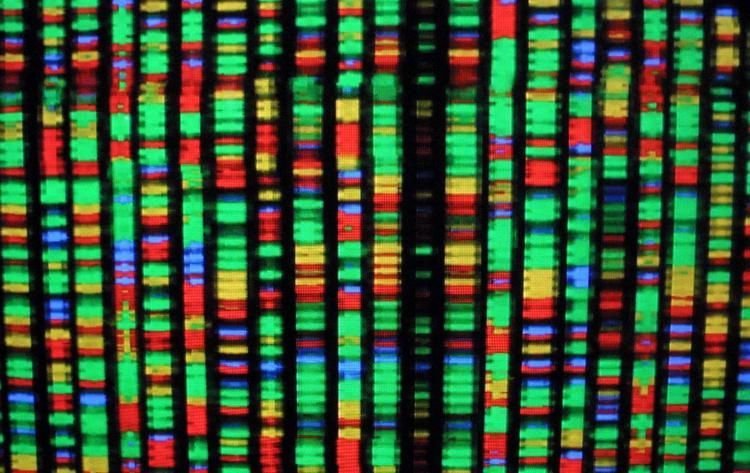
“Follow the evidence, wherever it leads” – Plato's Socrates.
DNA: As a boy, the first I heard about this mysterious stuff was from Richard Attenborough explaining to me how he had cloned dinosaurs in his Jurassic Park using some ancient blood from a mummified mosquito. We were then subjected to a talking DNA strand explaining the basics of how to create raptors from frog and dino-DNA. Everybody then got torn to pieces and I learnt that playing God can be dangerous - duly noted, thanks Spielberg.
I read about the workings of DNA a few years later. According to the common theories of its origins, DNA (or deoxyribonucleic acid) came about by chance. Allegedly, the blueprint for every cell and all behaviour of our animated sacks of matter was the result of an active primeval soup that was struck by lightning and gave matter the ability to duplicate. What we do know is that it did occur roughly three billion years ago in a nutritious blend of minerals and water created by a closely circling moon causing global tidal waves every three hours and releasing the vital nourishment that makes up the basis of life.
The conundrum that scientists have with the origins of life is that for life to exist DNA is required and DNA cannot exist by chance.
Along with most inexplicable scientific situations, this is rarely seen or talked about by mainstream channels but the depth that the weirdness goes deeper then the exasperated ramblings of the white rabbit.

The Human Genome Project was a thirteen year mission to unravel the secrets of the clandestine secrets of the data store that carries all the information required to make a human being. It was completed in 2003 and has shed a bright light into the previously murky depths of DNA structure.
The key goals of the project were to identify the all the genes in human DNA (roughly 25,000) and determine the sequences of the three billion chemical base pairs.
What astounds a large part of the academic community is that an unbelievable complexity of the arrangements is required to create life. As biologist and physicist, Paul Davies stated in 2004:
‘Most people take the existence of life for granted, but to a physicist like me it seems astounding. How do stupid atoms do such clever things? Physicists normally think of matter in terms of inert, clod-like particles jostling each other, so the elaborate organisation of the living cell appears nothing short of miraculous. Evidently, living organisms represent a state of matter in a class apart from the rest.’

Researchers have tried for many years to create life in the laboratory with no success. In fact, generating life in the lab has proven impossible. Researchers began to realize that new natural laws would need to be discovered to explain how the high degree of order and specificity of even a single cell could be generated by random, natural processes. Studies and probability have shown that an unbelievable complexity of arrangements is needed to produce life.
So how did DNA come about in the first place, because as it stands now, only DNA can create DNA.
This is a problem that seems to have no answer. Some chromosomes contain extremely long strings of DNA more than a metre in length! That is a colossal feat considering the microscopic nature of the molecules themselves. However, the question that has everybody puzzled is the origin of the process. Protein synthesis must be directed by DNA, yet DNA replication cannot take place without these proteins…… so what came first, the protein or the DNA?
Evolution lacks a scientifically acceptable explanation of the source of the precisely planned codes within cells without which there can be no specific proteins and hence, no life.
The main reason there is controversy surrounding this conundrum is that DNA cannot exist without life and life cannot exist without DNA. The two exist interdependently and create a classic chicken and egg scenario.
To give you an idea of the probabilities required for DNA to have occurred by chance, I will drill down a little more into the numbers. Bear in mind that the information contained in a single gene must be at least as great as the enzyme it controls.
Just one average protein contains over 300 amino acids. In order to create the protein it would take a gene of DNA that would have to contain 1,000 nucleotides (the building blocks of DNA) in its chain. Every DNA chain contains four sets of nucleotides. This seems complicated but it results in a possible 4 x 101000 possible forms. That is 4 followed by 1,000 zeros!

We cannot even try to comprehend this value but to give you some perspective, it is estimated that there are only 1080 atoms in the observable universe. Looking at these numbers, it is easy to see how utterly impossible it would have been for the complexity of DNA to be accidentally created, even given the timescales involved. In the world of probability, this just would not happen at all.
Even more astounding, for a minimum living cell there are 60,000 proteins of 150 configurations. Research shows that for evolution to create the first cell, the chances would be 1 in 10104,478,296.
That number is so large that no self-respecting scientist can ever uphold the possibility of it coming about by chance. If every single particle in the universe had one chance per second since the beginning of time, then we still would not have life.
Nevertheless, it remains that DNA happened. Once DNA happened, evolution kicked in and we are the result of that evolution as the universe ponders itself.
I will not hypothisise about how DNA came to exist, be it a a holographic universe or a mind of creation. I will leave that up to you. However, the facts remain and they point to questions we, as a species, are having difficulty fathoming, let alone attempting to answer. The dice cannot create life, so what can?